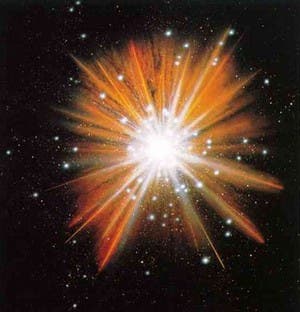
I don’t know about you, but I’m having some really big problems wrapping my mind around this; the controversial theory that states the black holes might have collapsed (somehow), and then were reborn at the Big Bang of our universe. Called primordial black holes, they were formed again in the hyper dense conditions existing in the moments after the, which would make them even more exotic and harder to understand than the supermassive black holes at the center of most galaxies.
Professor Carr and Professor Coley say if the universe expands and contracts in cycles of big bangs and big crunches, some primordial black holes may survive.
So far, these primordial black holes exist only in theory, but even if one was found, it’s extremely unlikely that anybody would be able to figure out if it was born before our universe. Again, this seems extremely interesting, but highly speculative. Dr Tamara Davis, an astrophysicist and theoretical cosmologist with the University of Queensland claims the same thing.
“We know our theories break down when you get to the densities and pressures existing near the big bang,” she said. We don’t know the physics of what would happen in this bounce, or even if the bounce occurs at all. It’s just one of the possible theories of how our universe began, and it’s a very speculative one.”
She also makes a pretty convincing statement, explaining that the laws of physics change as the universe changes.
“We know our theories break down when you get to the densities and pressures existing near the big bang,” she said.
“The strength of gravity, the speed of light, or the strength of the electric charge could be different in different universes,” she said. So it becomes even more speculative to say black holes from one universe could exist in another. But this kind of research is also very important because it’s only by pushing the boundaries of our current theories that we can find out where the weaknesses are and make progress in figuring out how to solve those weaknesses.”









